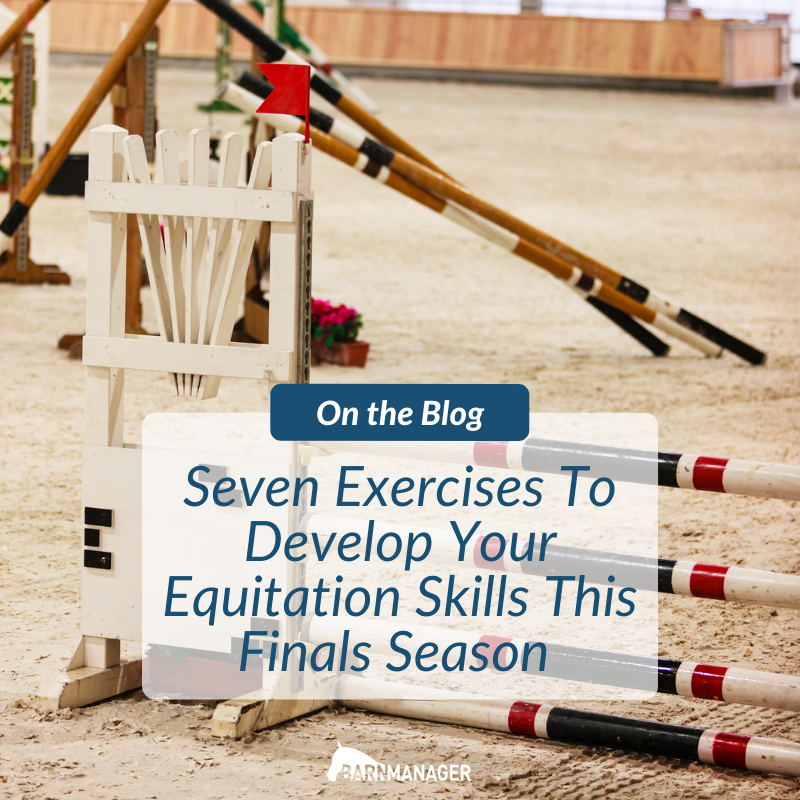
Seven Exercises To Develop Your Equitation Skills This Finals Season
Seven Exercises To Develop Your Equitation Skills This Finals Season
We have all seen the pictures of the technical and impressive courses that the top equitation trainers set up to prepare for equitation finals, but what are some of the simpler ways you can do this yourself? Here are some tips to get you and your horse at the top of your game even if you are staying home this fall.
1. Cavaletti Work
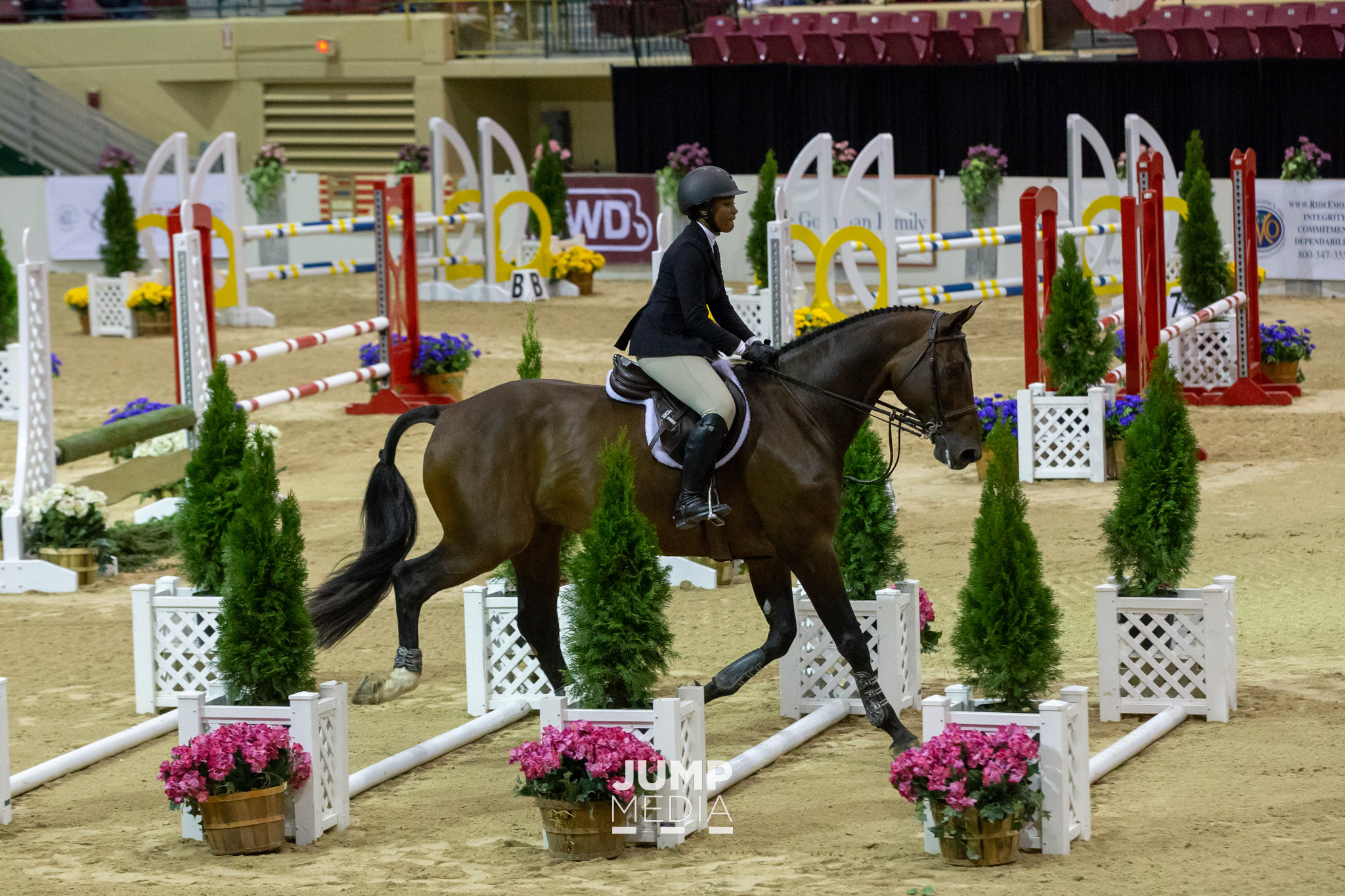
Setting up a line of cavaletti is a great way to practice collecting and lengthening your horse’s stride. Cavaletti poles are easy to set up in a gymnastics pattern, which can help the rider’s balance and position.
You can set up a variety of exercises, like trot rails, bounces, one-strides, or a combination of these.
2. Bending Lines
Almost every equitation final course has at least one bending line. Setting up a bending line and learning to ride both the inside and outside track by adding or taking out strides is a great way to practice for future, more technical, courses. Riders can also practice holding the lead their horse lands on through the bending line. If you are unsure of what types of lines to set up, check out some past equitation finals courses for reference here: https://www.medalmaclay.com/equitation-courses
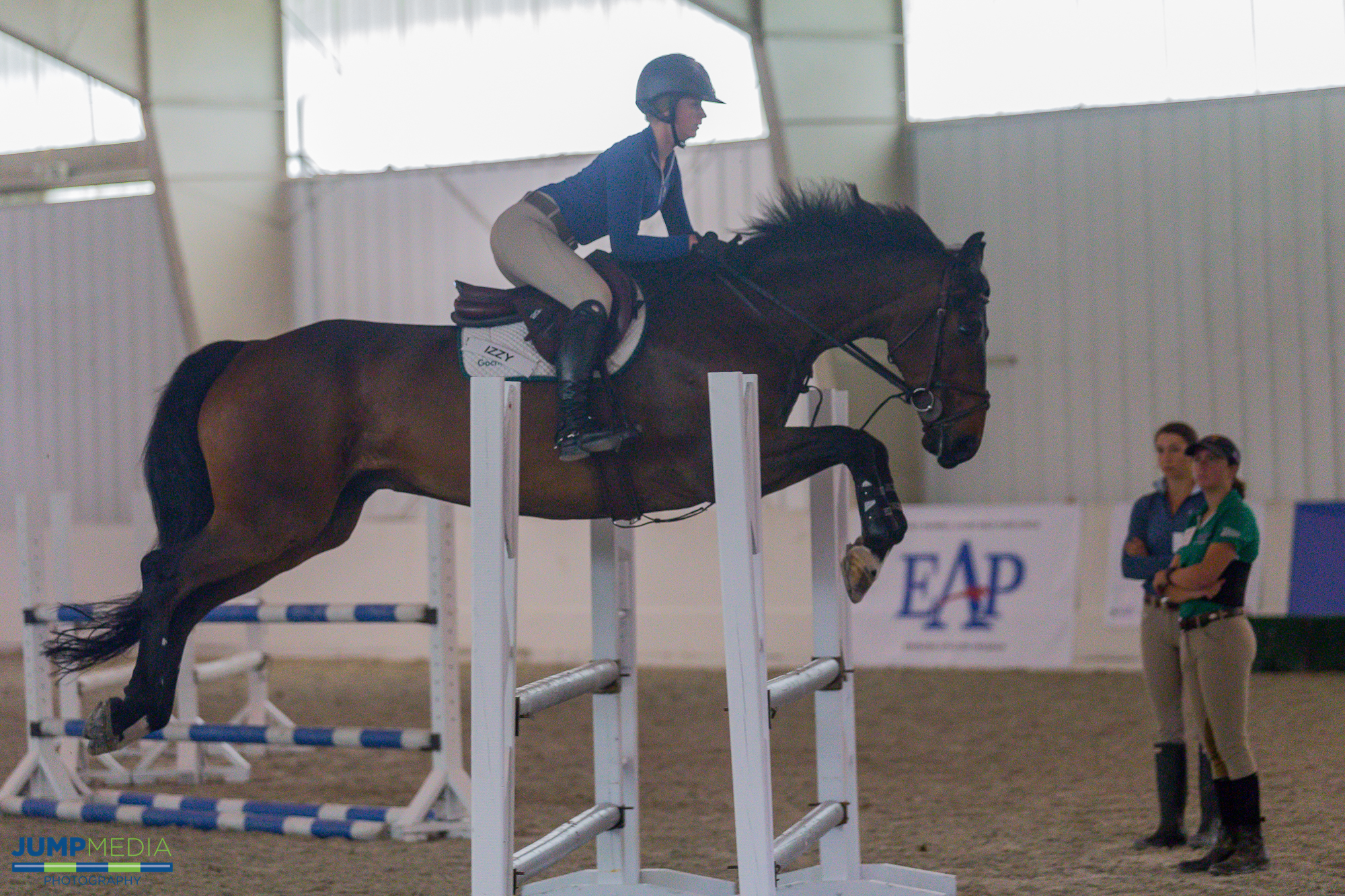
3. Practice Your Leads
Riders are often asked to canter fences on specific leads or show a change of lead while in an equitation test. This is a skill that is perfect to learn and practice at home. Making sure that your horse is in tune with your cues is essential. Horses can sometimes get a little anxious about picking up the counter canter, so executing a calm and smooth transition is key. All horses have a stronger direction, but working your horse equally so that they are as comfortable and strong as possible on both leads is helpful.
Additionally, it is important to be able to ask your horse to land on specific leads after a fence. Having the ability to land on different leads may help you in a test where the judge has asked riders to counter canter the next fence. Knowing how to land on the correct lead in a bending line can reduce the chance of your horse doing a lead change in the middle of the line or swapping before the next jump.
4. Transitions
Another skill equitation riders are often asked to demonstrate in a test is a transition. This can include transitions between gaits and transitions within a gait. Riders may be asked to return to a walk in a test or show a change of lead through a downward transition. Practicing these types of transitions to make them as seamless as possible will definitely benefit you in the equitation ring as well as improve your riding in general.
5. Adjustability
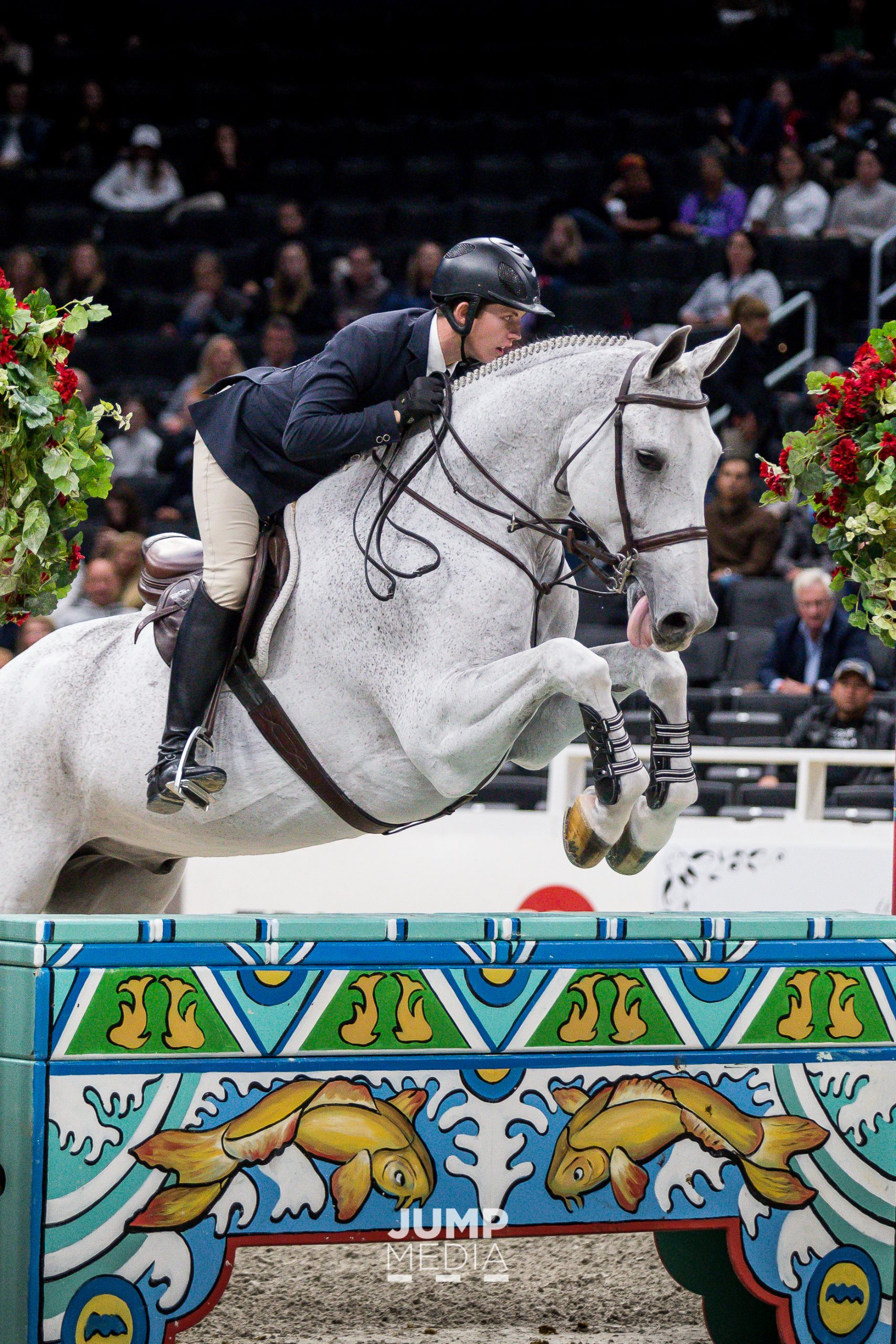
Equitation riders have to know how to manage their horse’s canter stride while on course. For example, an equitation final course may have a short three-stride line directly to a more open three-stride line. Riders should make sure their horse is adjustable and listening to their aids in order to collect and lengthen strides quickly. Equitation courses often have tight turns where a rider must collect their horse’s stride in order to successfully follow the track. Some tests require hand galloping to a fence, in which case the rider must know how to lengthen and maintain their horse’s larger stride.
6. Fences on the Corner
Equitation courses often include fences placed on the corner or end of the ring, which are designed to come up quickly. These jumps are sometimes skinny fences, which adds an extra level of difficulty. Straightness and communication between you and your mount come into play with skinny jumps. Your horse may not always be expecting these types of fences, so practicing different tricky angles at home can help both you and your horse become used to them. Looking at past equitation final courses to get inspiration for where to place the fence is helpful here as well.
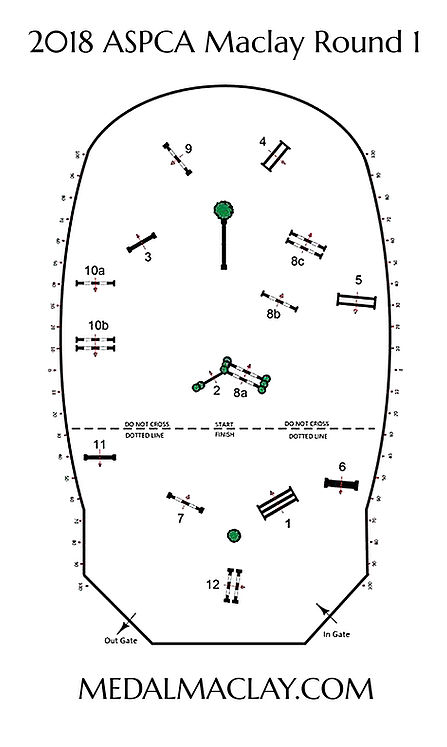
7. No-Stirrup Work
This tip goes without saying. Riding without stirrups can help build strength and improve balance. You never know when the judge will ask riders to drop their stirrups in a flat class or test! Although you may see the top equitation riders jumping without stirrups around a 3’6” course with ease, remember it takes time and practice to get there. Start by dropping your stirrups for part of your daily flatwork and then slowly increase the time. Similarly, begin by doing no-stirrup work over poles and then gradually start to add in small fences.
Even if you are not attending indoor finals this fall, these exercises are helpful in improving your equitation and getting you ready for the show ring!
Have questions about utilizing BarnManager or want to give it a try for yourself? Request a live demo here!